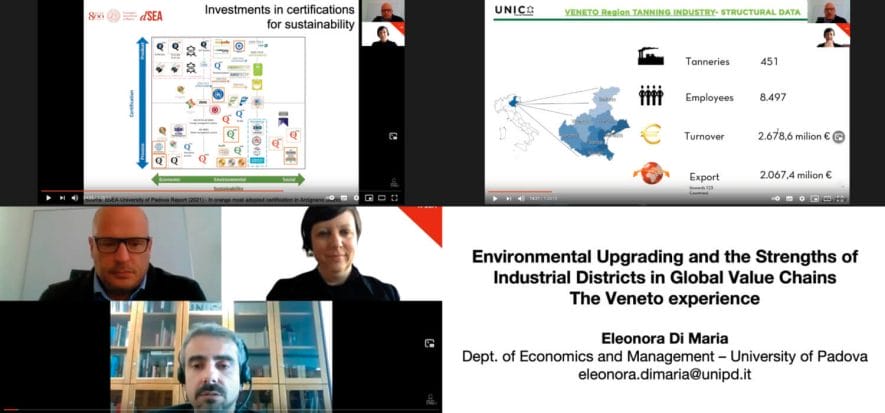Veneto tanning district is not only complexity, but also richness, which comes from the close and complex interrelation between numerous interacting subjects. This is what emerges from the study conducted by Professor Eleonora Di Maria, who teaches Economics and Business Management at Università di Padova, illustrated on Tuesday, March 30, 2021) during the webinar organised by UNIC – Italian Tanneries which you can review entirely by clicking here.
The study
Di Maria highlighted with her study how the success of the Vicenza district is closely related to its interconnection with the Global Value Chain.
“One of the secrets is the ability to make one’s processes more efficient by supporting the two phases upstream and downstream in a very efficient way – she explains -. On the one hand R&D and design, on the other branding and marketing”.
At the same time, the district has extended the attention to the environment as shown by companies, a key factor increasingly towards the promotion of its products, to its suppliers. “Companies are investing in sustainability and responsibility for the environment and the community. There is also attention to the growing demand from customers for green products and sustainability – continues the professor -. All this is also fundamental for the public aspect of all stakeholders”.
The figures speak for themselves: in recent years, production and exports have increased but the consumption of water, energy and chemicals has remained almost stable, if not even decreased.
Veneto tanning district
“We are talking about the largest tanning district in Italy” explained Luca Boltri (UNIC deputy director), underlining how 59% of national production is concentrated here.
Giacomo Zorzi of UNIC echoed him, recalling how the tanneries of Arzignano, Chiampo and Montebello generate “58.2% of the Italian turnover in the sector, 37.9% of the European one and 13.2% of the world”.
Beyond the numbers, Zorzi highlighted how tanneries have specialised over time, and chemical and technology companies have sprung up alongside them.
“This makes the district very efficient and allows you to find everything you need,” he continued. Elements to which the district has added training. A complexity, in short, “which allows the dissemination of knowledge, the growth of relationships, the reproduction of good practices, different approaches to the same problems and the dissemination of methods”.
Read also:










